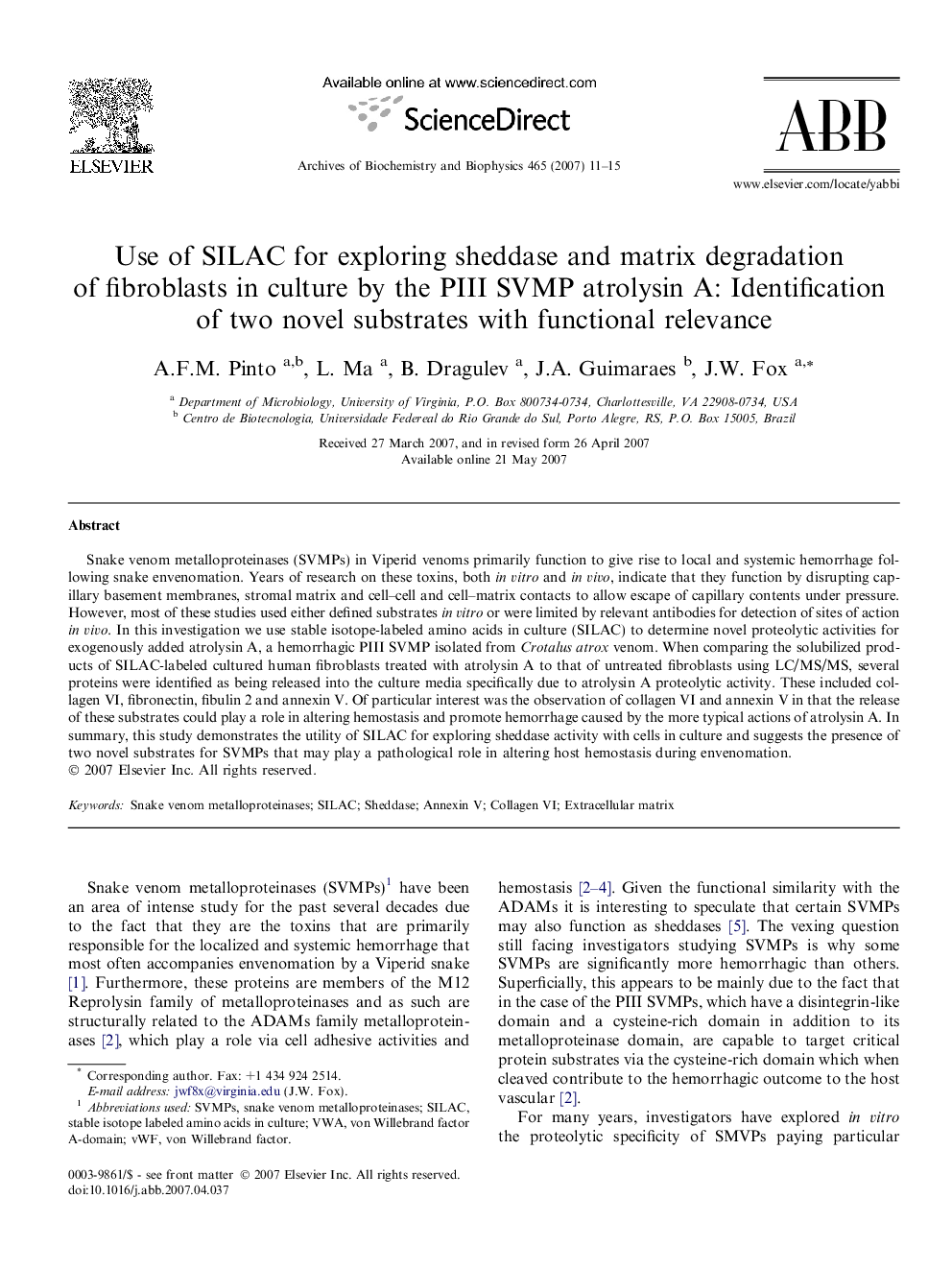| Article ID | Journal | Published Year | Pages | File Type |
|---|---|---|---|---|
| 1927034 | Archives of Biochemistry and Biophysics | 2007 | 5 Pages |
Abstract
Snake venom metalloproteinases (SVMPs) in Viperid venoms primarily function to give rise to local and systemic hemorrhage following snake envenomation. Years of research on these toxins, both in vitro and in vivo, indicate that they function by disrupting capillary basement membranes, stromal matrix and cell-cell and cell-matrix contacts to allow escape of capillary contents under pressure. However, most of these studies used either defined substrates in vitro or were limited by relevant antibodies for detection of sites of action in vivo. In this investigation we use stable isotope-labeled amino acids in culture (SILAC) to determine novel proteolytic activities for exogenously added atrolysin A, a hemorrhagic PIII SVMP isolated from Crotalus atrox venom. When comparing the solubilized products of SILAC-labeled cultured human fibroblasts treated with atrolysin A to that of untreated fibroblasts using LC/MS/MS, several proteins were identified as being released into the culture media specifically due to atrolysin A proteolytic activity. These included collagen VI, fibronectin, fibulin 2 and annexin V. Of particular interest was the observation of collagen VI and annexin V in that the release of these substrates could play a role in altering hemostasis and promote hemorrhage caused by the more typical actions of atrolysin A. In summary, this study demonstrates the utility of SILAC for exploring sheddase activity with cells in culture and suggests the presence of two novel substrates for SVMPs that may play a pathological role in altering host hemostasis during envenomation.
Related Topics
Life Sciences
Biochemistry, Genetics and Molecular Biology
Biochemistry
Authors
A.F.M. Pinto, L. Ma, B. Dragulev, J.A. Guimaraes, J.W. Fox,
